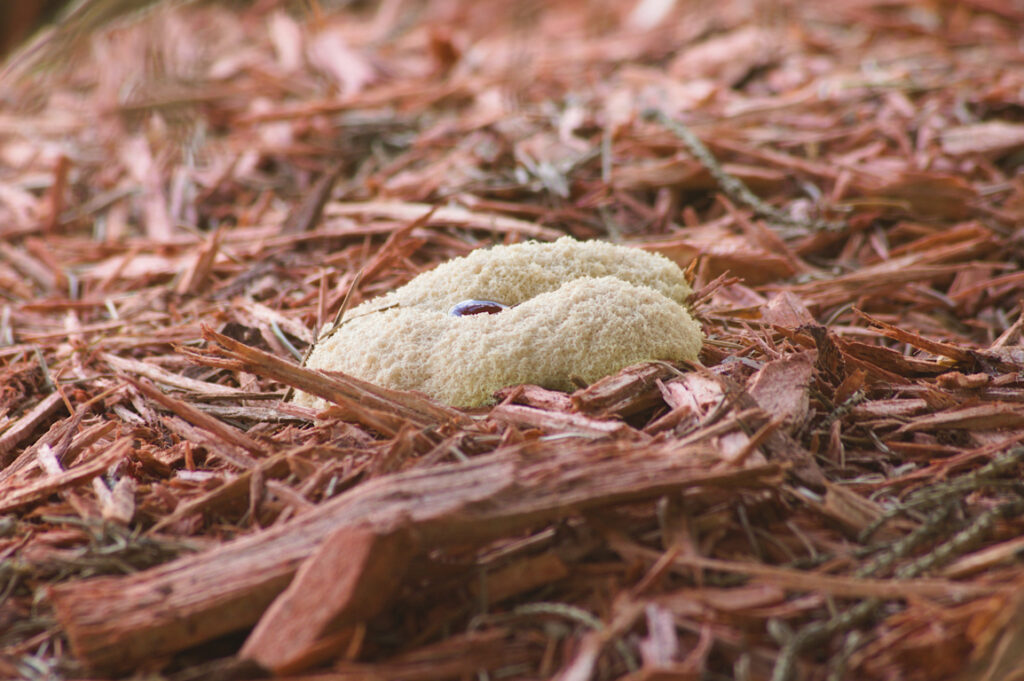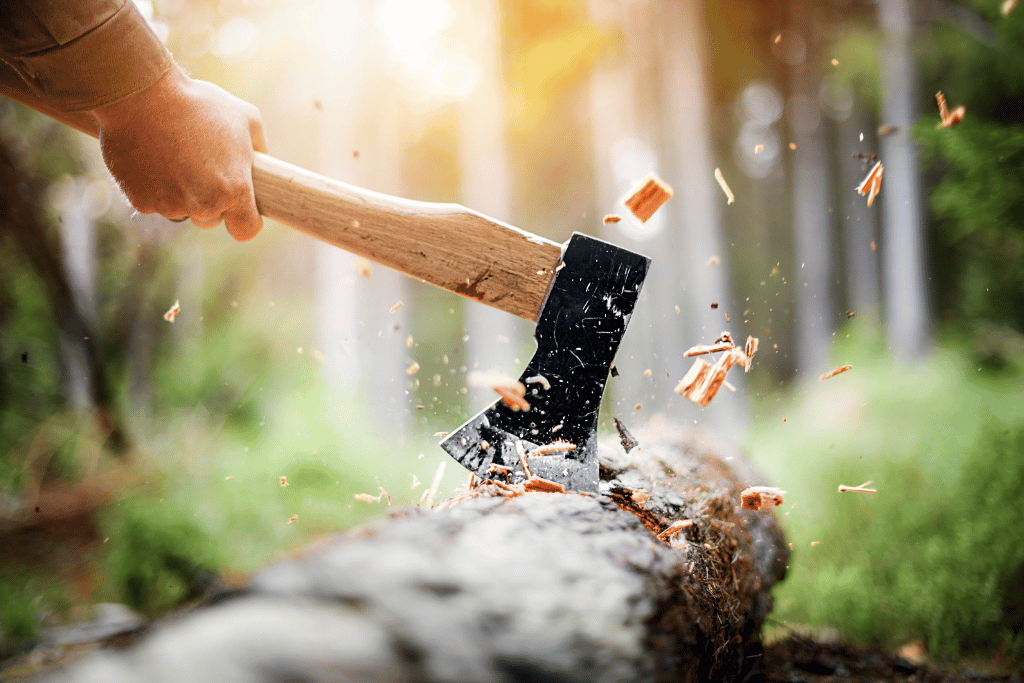
No sight can give you as much joy as the sight of seeing your garden thriving. It’s a feeling of accomplishment, knowing that you have been able to nurture the green space around your home. But, sadly, all this beauty can be destroyed in a blink of an eye due to mulch fungus.
Mulch fungi is deadly and can wreak havoc in your garden if not taken care of. But how to get rid of mulch fungus? How can you protect the beauty and health of your garden from this dreaded invader?
Fret not! We will discuss ways to prevent and control mulch fungus shortly. First, we must know the causes and symptoms of mulch fungus.
So, let’s dig in:
What is Mulch Fungus?

Mulch fungus, often soil-borne fungi, is a fungal disease affecting the mulch around plants. It is caused by a variety of fungi that is known to feed on dead organic matter.
What are the Symptoms of Mulch Fungus?
The symptoms of mulch fungus vary depending on what type of fungus is present, but it can typically include wilting leaves, yellowing foliage, stunted growth, and discolouration of mulch bark. Fungus can spread quickly if left unchecked, so it’s important to take preventive measures to protect your plants.
Types of Mulch Fungus and How to Treat

There are a variety of mulch fungus types that can damage and even kill your plants. Each type requires different measures.
1. Yellow fungus
Yellow fungus is caused by a soil-borne water mould called Pythium spp. It typically appears in moist, damp areas and can be identified by its yellowish-brown patches.
How to get rid of yellow fungus in mulch?
To eliminate yellow fungus in mulch, you need to improve drainage in the affected areas. Avoid overwatering and aerate the soil frequently to improve air circulation. It’s also essential to remove any infected plants and apply a fungicide specifically designed to treat Pythium spp. Speaking of fungicides, you can make one at home. Prepare a solution of 1 tablespoon baking soda and 1 gallon of water and spray the affected areas.
2. Stinkhorn fungus
Stinkhorn fungus is a type of mushroom that can be found in moist, shady areas. It’s easily identifiable by its distinctive odour and bright orange to yellowish-orange colouration.
How to get rid of stinkhorn fungus in mulch?
Unfortunately, there’s no effective way to get rid of stinkhorn fungus in mulch. All you can do is remove organic matter that may be harbouring the fungus, such as leaves and grass clippings. Additionally, you can reduce dampness in the affected areas by improving drainage and ventilation.
3. Orange fungus
A slime mould caused by a fungus-like organism called Physarum polycephalum, orange fungus often appears in damp environments as bright orange blobs. It feeds on decaying organic matter and produces yellow to orange-coloured masses.
How to get rid of orange fungus in mulch?
Getting rid of the orange fungus in mulch requires a thorough cleaning. Remove all affected mulch and debris, then treat the affected area with a fungicide. Take two teaspoons of baking soda and dissolve in a gallon of water, then spray the affected area to help remove.
4. White fungus
White fungi, aka saprophytic fungi, do not damage your plants as they only like to feed on dead organic matter. It is commonly found in damp, moist areas and is identified by its white, web-like appearance.
How to get rid of white fungus in mulch?
To eliminate white fungus in mulch, all you need to do is shovel away the affected mulch. Once done, mix water and vinegar and spray the affected area. The vinegar will help kill and remove any white fungus spores in the mulch.
5. Artillery fungus
Artillery fungus affects mulch, leaves, and other organic matter. It often appears as small black specks that contain a yellowish-white spore mass.
How to get rid of artillery fungus in mulch?
The best way to get rid of artillery fungus in mulch is to remove any existing infected mulch from your garden bed and replace it with new, sterile mulch. This will help prevent the spread of artillery fungus and other fungal pathogens. You can also use bleach or alcohol-containing mouthwash to keep the fungus at bay. Mix it in a spray bottle and apply it on the mulch to kill off any existing spores.
6. Dog vomit fungus
Dog vomit fungus is a slime mould; surprisingly, it is a beneficial organism. It helps to break down organic matter, which then releases nutrients back into the soil. However, the yellow appearance and slimy texture of the organism can be off-putting.
How to get rid of dog vomit fungus in mulch?
Most gardeners don’t know how to get rid of dog vomit fungus on mulch, and that’s okay. Why? Because there’s no need to. This type of mulch fungus goes away on its own. All you have to do is wait 14 days.
7. Mustard colour fungus
Mustard fungus is a saprophyte that feeds on dead organic matter. It commonly appears in the form of yellow to mustard-coloured patches.
How to get rid of mustard colour fungus on mulch?
Using a fungicide is the best way to get rid of mustard colour fungus on mulch. Choose one that contains copper, such as copper hydroxide or copper oxychloride and spray the affected area. This will help to kill the fungus and prevent it from spreading. Moreover, ensure that your mulch is not too damp, as this could lead to the growth of mustard colour fungus. If using a chemical fungicide always read and follow any instructions and warnings.
8. Fungus and mushrooms in mulch
Fungus and mushrooms can appear in your mulch for a variety of reasons. Fungi are natural decomposers that help break down organic matter, and mushrooms are the fruiting bodies of fungi.
How to get rid of fungus and mushrooms in mulch?
If you wish to get rid of fungus and mushrooms in your mulch, it is best to remove the affected area and discard it. Again, baking soda and water can do wonders for this. You can also use a fungicide to kill off the remaining spores of fungi. However, keep in mind that fungi are essential for healthy soils.
The Takeaway
Fungus can be a difficult problem to deal with. Following the tips for how to get rid of the fungus in mulch that we’ve outlined will hopefully help you prevent or control the spread of fungus.
Frequently Asked Questions (FAQ)
How to get rid of mulch fungus naturally?
Mulch fungus can be treated by removing any infected material and replacing it with new mulch. You can also attempt to control the spread of fungal infections by cleaning up any dead or decaying material and avoiding overwatering. Additionally, adding beneficial fungi to the soil can help prevent disease-causing organisms from reproducing.
How to get rid of fungus gnats in mulch?
Fungus gnats can be a nuisance to your garden, especially if they’re already residing on the mulch. To prevent and control fungus gnats, keeping the area free of decaying material is essential. You can also use nematodes or appropriate insecticides to manage an infestation.
How to get rid of mulch fungus on a succulent plant?
If your succulent has been affected by mulch fungus, the best strategy is to remove the infected material, replace it with fresh mulch, and increase airflow in the area. Also, consider using a fungicide to protect your plants from further infection.
How to get rid of fungus in mulch beds?
If you want to prevent and control fungal infections, you should avoid overwatering and ensure your mulch beds are well-drained. Furthermore, you should remove any dead or decaying material and use beneficial fungi to suppress the growth of disease-causing organisms. You can also opt for fungicides to protect your plants from fungal infections.
How to quickly remove mulch fungus?
Taking steps such as removing existing diseased plants and debris, avoiding overcrowding of plants, adding organic matter, reducing moisture levels, and applying fungicides can help to keep mulch fungus under control and ensure that your plants stay healthy.



